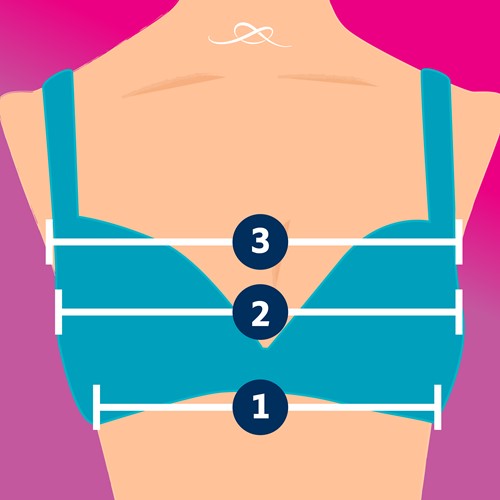Want to buy your first bra but don't know where to start? Read our handy guide to measuring and choosing your first bra!
Everything from choosing the design and colour, to measuring for your first bra is exciting. However, you might feel awkward about talking to your mum or close relative about bra shopping for the first time. If that’s the case, then worry no more - we’re here to guide you through all you need to know about bras, to help you feel positive and prepared!
A training bra is a type of bra designed for young girls who are just beginning to develop breast tissue, typically between the ages of 8 and 14.
The purpose of a training bra is to provide you with support and coverage as you start to develop breasts. It's important to remember that a training bra is not meant to enhance or alter the shape of your breasts, but rather to provide a comfortable and secure fit.
You might find that as you go through puberty and start to develop breast tissue, they can be sensitive or tender. Wearing a training bra can help alleviate some of this discomfort by providing a layer of padding or fabric between the skin and clothing.
Training bras come in a variety of styles and materials, including cotton, nylon, and spandex. Some have adjustable straps and hooks in the back, while others are simply stretchy and pull over the head. It's important to choose a training bra that fits properly and feels comfortable, as an ill-fitting bra can cause discomfort or even pain.
Using a tape measure, measure around your body in three places:
1) Under your bust
2) On your bust (the fullest part)
3) 2cm above the nipple

You can do this in centimetres or inches. WhatsApp your measurements to us at Lil-Lets Talk and we’ll calculate your size for you ASAP.
Have you been measured for your first bra and now don’t feel like it fits quite right? If you think your bra doesn't fit properly, then put it on and look in the mirror to check for the most common fit problems:
Remember, the band around your body should be in line with the wires at the front of your bra and if not, you may need a bigger back size. Or you could try the other hooks on the back of the bra, remembering that the hooks closest to the end of the strap are the loosest.
Proper measuring for your first bra is very important to make sure you have the right size as an ill-fitting bra is not only useless at supporting your breasts but is likely to make you feel rubbish. A well-fitting bra is like a best friend: supportive, comfortable and makes you feel good about yourself!